As some road noise is normal when driving, a distinctive whirring sound is not. This sound is trying to tell you a problem is occurring which will get worse and if not addressed and corrected can cause a breakdown. Fortunately there are only a handful of things that can cause whirring sounds which may increase or decrease with the speed of the vehicle.
What Goes Wrong?
The first thing in determining how to fix the problem is to find out where the noise is coming from and what conditions affect the noise such as; Is the car hot or cold? Are you driving at higher speeds or turning a corner? This will narrow the problem down and help us get the repair done.
What's the Cost?
Costs on the repair will all depend on the problem. If the problem is a simple tire rotation then a local garage can do the job for between $28.00 and $42.00 (US) and some will even do the job for free with the intent to check your brakes and possibly get an additional repair out of it. In other cases like an axle bearing hub replacement the cost will run between $50.00 and $100.00 (US) for the parts. A shop or dealer will charge between 1.2 and 1.5 hours depending on the manufacturer. If exact labor times or procedures are needed you can ask our experts to supply you with the information (free), but this guide will be sufficient in most cases.
Let's Jump In!
When a tire becomes scalloped or cupped the tread pattern is uneven which at
speeds over 30 mph can cause a whirring sensation in either the front or the rear
of the car. To check for this problem pass your hand over the tire's tread during
the inspection, it should be relatively smooth. If extreme high and low points exist,
the tire is cupped and needs to be rotated from front to back or replaced depending
on the severity. Causes for this tire problem include bad alignment, tires out of
balance, shock replacement or
struts and spring
replacement.
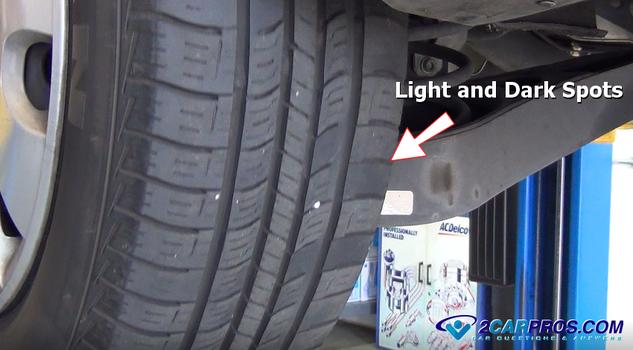
Axle bearings or bearing hubs are responsible for allowing the vehicle to roll
smoothly upon the wheels of the vehicle. When these bearings fail the metal from
the roller will get caught within a race of the bearing and create a whirring noise
that generally shows up over 30 mph. If the noise is being generated from the front
of the car, a bearing hub failure can be confirmed by turning the wheel slightly
from right to left. If the noise changes or goes away in one direction but returns
or gets louder in the opposite direction, one of the front bearing hubs is bad.
A quick way of checking for a failed bearing hub is to
safely lift the vehicle
so there is no weight on the suspected bearing and wheel. Grasp the tire with both
hands and shake it back and forth, and top to bottom. If the wheel seems loose the
wheel bearing hub needs replacement,
on older cars the
front wheel bearings
will need replacing.
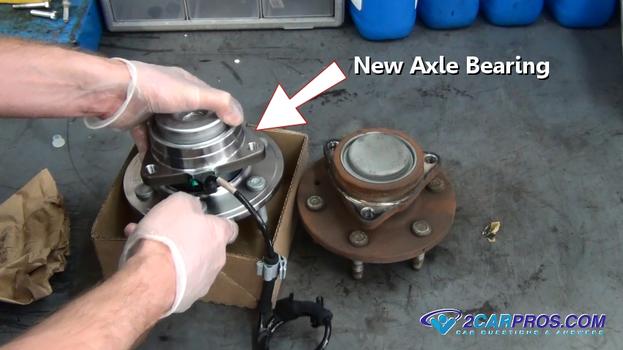
A whirring noise from the rear of the vehicle can also be caused by a rear axle
bearing that has gone out. This can be accompanied by a gear oil leak from the differential
on a rear wheel drive car, or by lateral wheel play on an rear independent suspension
car. In each case the rear axle bearing
will need to be replaced or the
replacement of the rear CV
axle bearing.
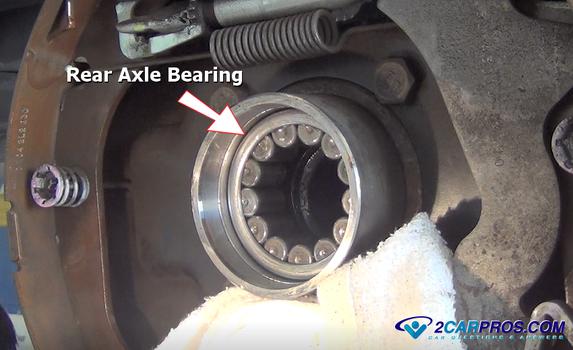
Power steering fluid is used inside the steering system to help assist the driver
to steer the front wheels. When this fluid becomes low or when it needs to be flushed
it will create a whirring noise while the engine is running. For this problem it
doesn't matter how fast the car is being driven because the pump pressure is maintained
by using a pressure regulator inside the pump housing. This whirring noise will
change as the steering wheel is moved in either direction. To check this problem
remove the steering pump fluid reservoir lid and inspect the fluid level and color.
If the level is low, add fluid to the full line and check the system for leaks.
If the fluid is full but it looks and smells burnt, a
power steering fluid flush is needed.
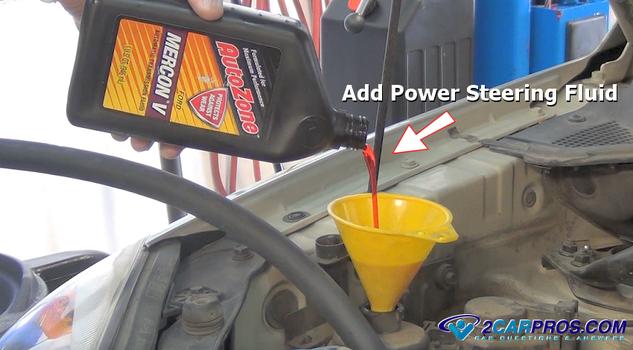
When a power steering pump fails it can do so by allowing air to enter the steering
fluid when the engine is running. This air causes a whirring sound which is present
when the fluid is full and when the fluid is in good shape. To check for this condition,
start the engine and allow it to run for 2 minutes. Then remove the reservoir cap,
using a flashlight, check to see if the fluid has small air bubbles signaling the
steering pump has gone
bad and needs replacement.
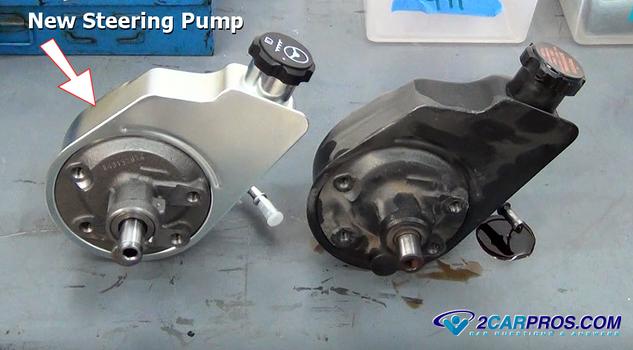
If a whirring noise is coming from the center of the vehicle (rear wheel drive)
or in the front near the transmission (front wheel drive) with an automatic transmission
it could have a clogged transmission filter. The noise may change with engine speed
and will be generated with the car moving or not. When this filter clogs up the
transmission pump scavenges for fluid causing the whirring noise, this problem can
be fixed by servicing
the transmission and filter.
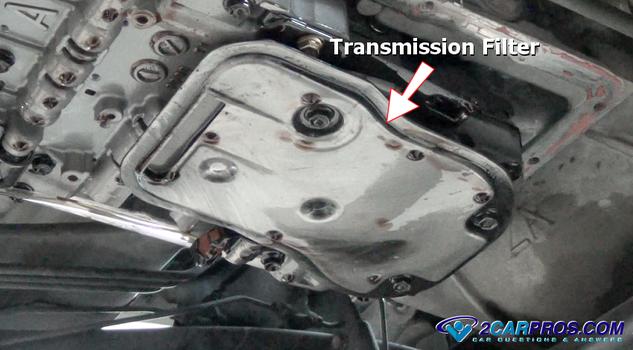
When the rear or front differential oil level is low whirring sounds can be generated
as the metal of the differential is lacking lubrication. To check for this problem
jack the car up using jack
stands and check the fluid
level. If the fluid level and axle bearings are okay then the gear set could
have worn out which will be indicated by metal shavings in the oil. This problem
typically happens on high mileage cars and trucks and can only be fixed by replacing
the ring and pinion gear or complete differential unit.

Questions?
Our certified technicians are ready to answer car repair questions for free. We hope you saved money and learned from this guide. We are creating a full set of car repair guides. Please subscribe to our 2CarPros YouTube channel and check back often for new videos which are uploaded regularly.


